Anton Genza
Tourism accounts for over 9% of global gross domestic product worldwide; in Kazakhstan, it accounts for just over 3%, according to the latest report from the World Travel & Tourism Council from 2023. But what are the prospects for the Kazakh tourism industry and what challenges does it face today?
Kazakhstan is becoming an increasingly popular vacation spot.
Kazakhstan is ranked 52nd in the Travel & Development Index (TTDI) in May 2024, an increase of 6 places since 2019. The TTDI provides information on a range of factors that have a positive or negative impact on the development of the tourism sector.
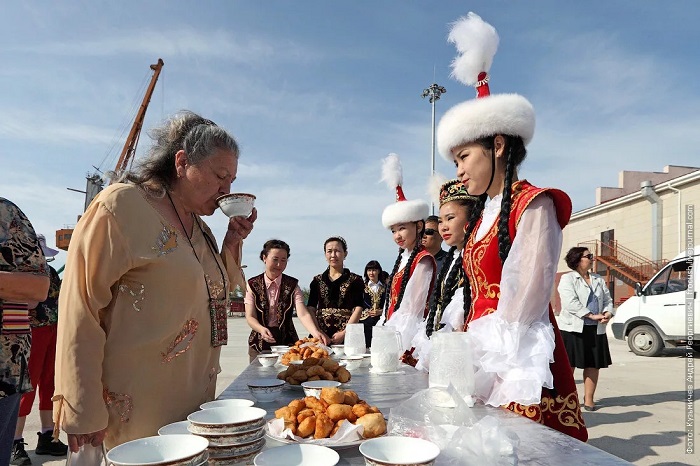 The data allows for extensive comparability between the nations examined and their tourism policies due to the detailed breakdown into individual economic sectors and political developments. It can thus also be used as a support for private investors to show the competitiveness of a country. In addition to the opportunities for the tourism industry, the index also highlights sector-specific challenges and areas for improvement, which in turn may affect the future-oriented development of tourism worldwide.
The data allows for extensive comparability between the nations examined and their tourism policies due to the detailed breakdown into individual economic sectors and political developments. It can thus also be used as a support for private investors to show the competitiveness of a country. In addition to the opportunities for the tourism industry, the index also highlights sector-specific challenges and areas for improvement, which in turn may affect the future-oriented development of tourism worldwide.
In the case of Kazakhstan, it is worth noting that the Central Asian country has become significantly more receptive due to the expansion of infrastructure, flight routes and the facilitation of the visa application process through the so-called “e-visa”.
At the same time, there is still a backlog in the expansion and new construction of transport routes, especially to remote areas. Furthermore, the cumbersome visa application process, which may also have a deterrent factor, could be counteracted by expanding partnerships with countries for visa-free entry.
Further expansion plan for Kazakh tourism
In response to the weakening tourism industry, the Kazakh President Tokayev announced a package of measures this summer to attract investors and further boost the development of the sector. These include the renewal of rail transport and railway stations; in addition, the expansion of highways and more low-cost flights between popular destinations.
Nature conservation should not suffer as a result of tourism, but should continue to be considered responsibly. The awareness of the untouched beauty of the nature reserves is only compatible with a trained awareness of the visitors. Larger events, such as the recently held World Nomad Games in Astana, served to draw attention to the special bond between culture, tradition and nature on the international stage.
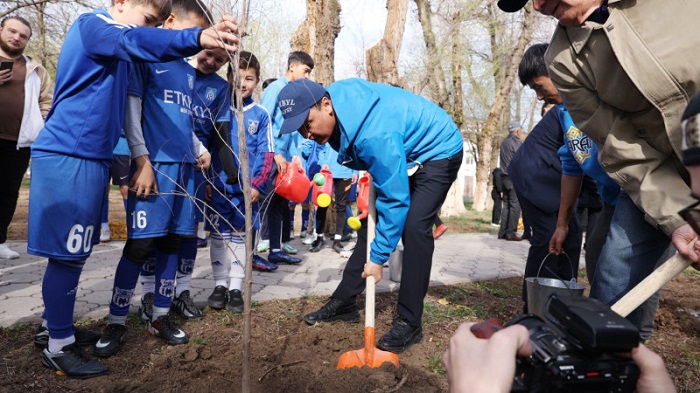 Initiatives such as the “Taza” environmental campaign launched by the president are intended to contribute to increased environmental awareness in society. Three million people in Kazakhstan have already taken part in the clean-up campaign launched in April this year. However, it remains questionable how the program can develop in the coming years in remote areas outside the big cities and how it can be adapted to the realities of the targeted expansion of the tourism industry to include visitors from outside the country.
Initiatives such as the “Taza” environmental campaign launched by the president are intended to contribute to increased environmental awareness in society. Three million people in Kazakhstan have already taken part in the clean-up campaign launched in April this year. However, it remains questionable how the program can develop in the coming years in remote areas outside the big cities and how it can be adapted to the realities of the targeted expansion of the tourism industry to include visitors from outside the country.
On the sense and joy of traveling
In 2003, Dagmar Schreiber published the first and only travel guide to Kazakhstan in German to date, with Trescher Verlag. The philosophy graduate fell in love with the country while working on a project there in 1994. Over the years, she co-founded “Kazakhstan Reisen” and began to accompany environmentally friendly trips through the Central Asian country.
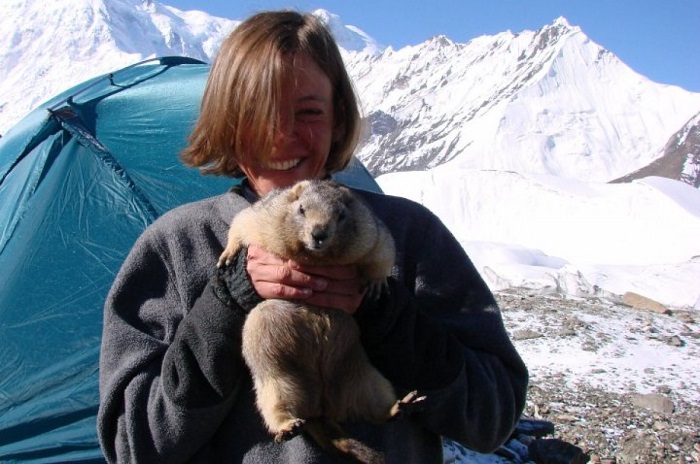 Today, the 62-year-old travel enthusiast continues to advocate for the compatibility of environmental protection and travel. This harmony is reflected in her philosophy – instead of using fast means of transport, such as cars or buses, to see as much as possible in the shortest possible time, she believes that the most beautiful places are discovered on foot or on horseback, at a leisurely pace.
Today, the 62-year-old travel enthusiast continues to advocate for the compatibility of environmental protection and travel. This harmony is reflected in her philosophy – instead of using fast means of transport, such as cars or buses, to see as much as possible in the shortest possible time, she believes that the most beautiful places are discovered on foot or on horseback, at a leisurely pace.
In an interview for “Info Shymkent” in September 2022, Schreiber expressively expresses her wish “that everything runs so harmoniously that the locals still feel at home and not like actors in an ethno village; that everyone can meet at eye level. I hope that tourism does not destroy nature and that people plan sensibly for the future.”
For a while, Schreiber was also a consultant for the “Information and Resource Center for Ecotourism” (IRZÖ), which is committed to popularizing the idea of ecotourism. Based on the idea of “community-based” travel, the IRZÖ supports interested travelers in finding nature-oriented accommodation and planning trips in local communities in Kazakhstan.
Ecotourism in Kazakhstan
The World Tourism Organization (UNWTO) defines ecotourism as travel to natural areas to experience nature and tradition with an educational focus. At the same time, the negative impact on the environment should be minimized and the maintenance of natural areas should be supported in a targeted manner. This includes the economic component and should benefit local communities.
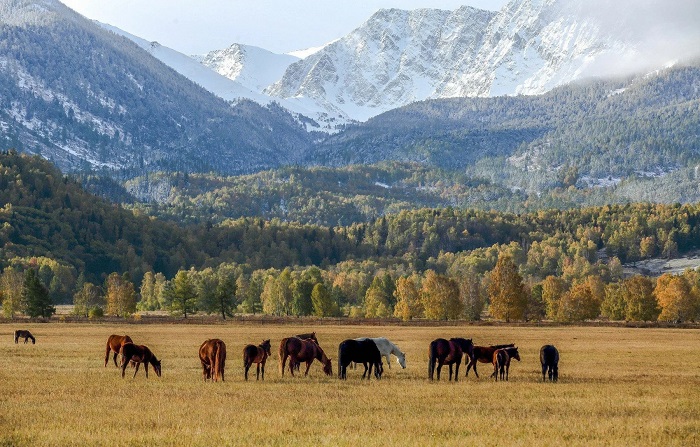 In Kazakhstan, the two national parks Katon-Karagai and Kolsai Koldery are popular destinations for nature-loving newcomers. In 2022, local authorities implemented virtual tours to regulate the flow of visitors. The 3D panoramas and bird’s-eye views provided by drone recordings help visitors to immerse themselves in the nature reserves from the comfort of their own homes – regardless of the weather.
In Kazakhstan, the two national parks Katon-Karagai and Kolsai Koldery are popular destinations for nature-loving newcomers. In 2022, local authorities implemented virtual tours to regulate the flow of visitors. The 3D panoramas and bird’s-eye views provided by drone recordings help visitors to immerse themselves in the nature reserves from the comfort of their own homes – regardless of the weather.
Nevertheless, screen recordings do not replace an actual visit to these picturesque landscapes. “90 percent of visitors to the national park [on site] only visit Lower Kolsai Lake and wrongly bypass the middle and upper lakes, which, however, give the most to the human psyche,” notes Hamit Akhmetov, a researcher at Kolsai Koldery National Park. Rather, the technology is designed to help interested parties plan their trip and draw attention to the nature reserves.
In addition, this measure, in collaboration with the local population, helps to enrich travelers’ experiences by offering overnight stays in yurt tents, while also financing the preservation of local traditions.
About untouched nature and educational tourism
The story of Elmira Jumanova is indicative of what environmentally conscious and future-oriented tourism can look like. She heads the Department for Environmental Education and Tourism and frequently guides tourist groups through nature reserves in southern Kazakhstan at the western Tian Shan Mountains, where three unique nature reserves meet. Among them is the Aksu-Zhabagly Nature Reserve, which has been open to tourists accompanied by a guide since 2004. Regulations stipulate that no more than 24 tourists a week are allowed to enter the site, to allow the reserve to recover from human influence. The tourist season begins in June and continues into November. The rest of the year is spent preparing and optimizing for the next season.
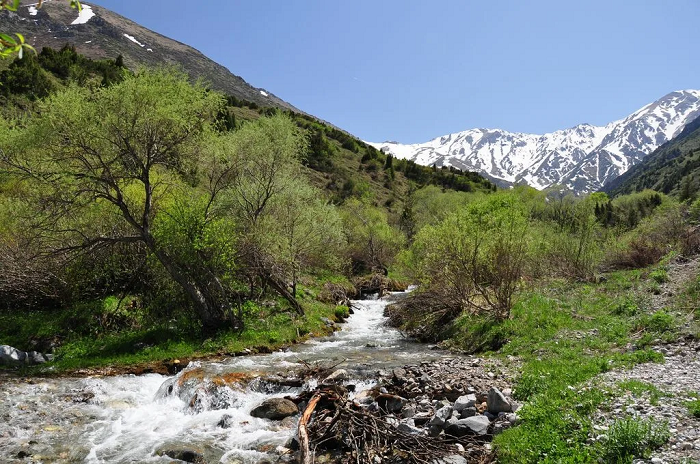 In two decades, an environmentally friendly infrastructure for tourists has been built up with potential for improvement. However, Jumanova notes that further development in the human resources area and interhuman networking are still needed. The employees could share their expertise and thus share large parts of Kazakhstan’s rich nature with a larger audience, without living at the expense of the flora and fauna. ///nCa, 2 January 2025
In two decades, an environmentally friendly infrastructure for tourists has been built up with potential for improvement. However, Jumanova notes that further development in the human resources area and interhuman networking are still needed. The employees could share their expertise and thus share large parts of Kazakhstan’s rich nature with a larger audience, without living at the expense of the flora and fauna. ///nCa, 2 January 2025
About the author

Anton Genza studied East Asian Studies and Journalism in Berlin. He holds an M.A. in Japanese Studies and is currently enrolled in the German Academy of Journalism. He is a freelance journalist and translator in Almaty.